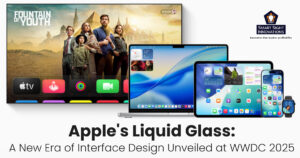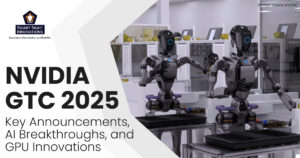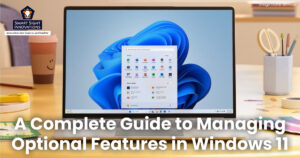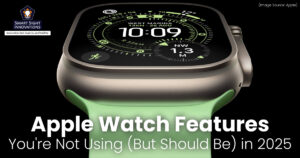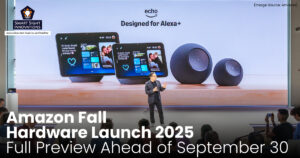 Synopsis: Magento opens up many opportunities to create user-friendly UI through components. These components help in rendering various content using JavaScript and HTML files and data provided from the backend (PHP) part of the Magento application. Magento UI components represent individual UI elements, such as tables, buttons, dialogs, and others.
Synopsis: Magento opens up many opportunities to create user-friendly UI through components. These components help in rendering various content using JavaScript and HTML files and data provided from the backend (PHP) part of the Magento application. Magento UI components represent individual UI elements, such as tables, buttons, dialogs, and others.
They are designed for simple and flexible UI rendering. Some elements or components include action toolbars, breadcrumbs, buttons, drop-downs, forms, icons, layouts, messages, pagination, pop ups, and more.
High-level building blocks or elements of a user interface called components allow you to quickly build a UI for your app. When a developer or designer is designing an app or website, several pieces come together to form a complete and efficient user interface.
These can include input fields, dropdown lists, buttons, toggles, search fields, sliders, tags, and more. Delving further, knowing some basics can help.
About Magento
Magneto is one of the best e-commerce platforms. It is built using open-source technology. It gives its users the ability to control the look, functionality and content of their online store without compromising on the shopping experience.
Magento platform is a stable choice but continues to grow. This platform also provides its customers with a variety of plug-ins and themes for what they want to do and achieve.
If you are an owner or help to run an e-commerce business, you should consider Magento. Businesses need to seek professional Magento mobile app development if their business needs to integrate multiple systems into their app or website.
About UI
UI components provide interactivity for the user on an app or website. A good UI will make it easy to tell the device what they want it to do. And, easy communication between user and application is the UI goal.
A UI component library consists of a set of ready-made components such as input fields, dialogs, buttons, and more. These libraries can make creating app layouts much simpler, faster and easier.
Benefits of using these UI component libraries include:
- Accessibility, as libraries follow accessibility guidelines, so the concern of developers and designers is reduced to an extent.
- Compatibility, as frontend developers face issues with cross-browser or cross-device compatibility. With available libraries, compatibility saves time.
- Good looks as the front-end components look attractive with no extra effort.
- Easy to use as the established libraries are well organized and have excellent documentation that is easy to implement and follow.
Magento UI Components
Flexible UI rendering is possible in Magento due to the use of UI components. Using them, you configure every page of your magento e-commerce website. In addition, the Magento UI components are responsible for supporting the interaction of JavaScript components with the server.
There are two major types of UI components included in Magento:
- Basic, divided into listing and form components such as paging, mass actions, filters, bookmarks, and crucial admin interface.
- Secondary, which is a suitable extension of basic components.
When designing for a Magento application, care should be taken to ensure that the overall experience promotes clarity, efficiency and success for the user. Consult with a reliable Magento development company for the best results.
UI components
When designing your interface, choose consistency and predictability in interface elements. Users tend to become familiar with elements that act in a certain way.
Choosing appropriate elements will help with task completion, efficiency and satisfaction.
Interface elements include the following but are not limited to:
- Input controls such as checkboxes, radio buttons, dropdown lists, list boxes, buttons, toggles, text fields and date fields.
- Navigational components like a breadcrumb, sliders, search fields, pagination, sliders, tags and icons.
- Informational components like tooltips, icons, progress bar, notifications, message boxes and modal windows.
- Containers such as an accordion which is a graphical control element consisting of a vertically stacked list of objects, such as labels or thumbnails.
UI components in Magento
Magento UI library is a flexible frontend design. This frontend theme employs a mixed set for the base elements to simplify development and customization. It helps to understand how the library is organized, and how it is used.
Input control component
Checkboxes: They allow the user to select one or more options from a set. It’s best to render the checkboxes in a vertical list. More than one column is acceptable if the list is so long that it may require scrolling or if a comparison of terms may be necessary.
Radio buttons: They are used to allow users to select one item at a time. It is a graphical control element that allows the user to select only one of a predefined set of unique options. This property of radio buttons makes them different from checkboxes.
Dropdown lists: These allow users to select items one at a time and are more compact in allowing you to save space. Consider adding text to the field, such as ‘select one’ to help the user identify the action required.
Toggles: A toggle button allows the user to switch a setting between two states. They are most effective when the on or off states are visually different.
Buttons: It indicates an action upon touch and is usually labeled using text, an icon, or both.
Text field: It allows users to enter text which can be either a single line or multiple lines.
Navigational components
Search field: It allows users to enter a keyword or phrase (query) and submit it to search the index to get back the most relevant results. Usually, search fields are single-line text boxes and come with a search button.
Pagination: It divides the content between pages and allows users to skip between pages or go through the order of content. This makes it easy for the user to choose the page they want to visit. If they can’t find what they’re looking for on the home page, they can choose to select any page.
Icons: An icon is a simplified image that serves as an intuitive symbol used to help users navigate the system. Usually, icons are hyperlinked.
Image carousel: It allows users to browse through a set of items and select one if they so choose. Typically, images are hyperlinked.
Sliders: It is also known as a track bar. It allows users to set or adjust a value. When the user changes the value, it does not change the format of the interface or other information on the screen.
Tags: Tags allow users to search for content in the same category. Some tagging systems also allow users to enter their tags into the system and apply them to content.
Breadcrumb: It allows users to identify their current location within the system by providing a clickable trail of pages that proceed to navigate.
Information component
Notifications: This is an update message that announces something new for the user to see. Notifications are commonly used to indicate the successful completion of a task or to indicate alerts such as an error or warning message.
Tooltips: This allows the user to see hints when they hover over the item indicating the name or purpose of the item.
Pop-up: Pop-ups are also known as modal windows. This requires users to interact with it in some way before they return to the system.
Message boxes: A message box is a small window that provides users with information and any action they need to take before they move forward.
Progress bar: It indicates where the user is in a process by progressing through a series of steps. Usually, progress bars are not clickable.
Container component
Accordion: This is a vertically stacked list of items that use a show or hide functionality. When a user clicks on a label, it expands the section to show the content. It can have one or more items visible at a time and can have default positions that reveal one or more sections without the user having to click them.
Conclusion
As you now know, UI components are a powerful tool for creating the elements of an interface. The main advantages of Magento UI components is the combination of HTML content and JavaScript, which allows the creation of new components with better appearance and functions.
UI Components are an ambitious approach to building user interface elements in Magento, and most of the new admin console is built on this functionality. When designing your Magento module, consult a leading Magento development company for desired outcomes.



